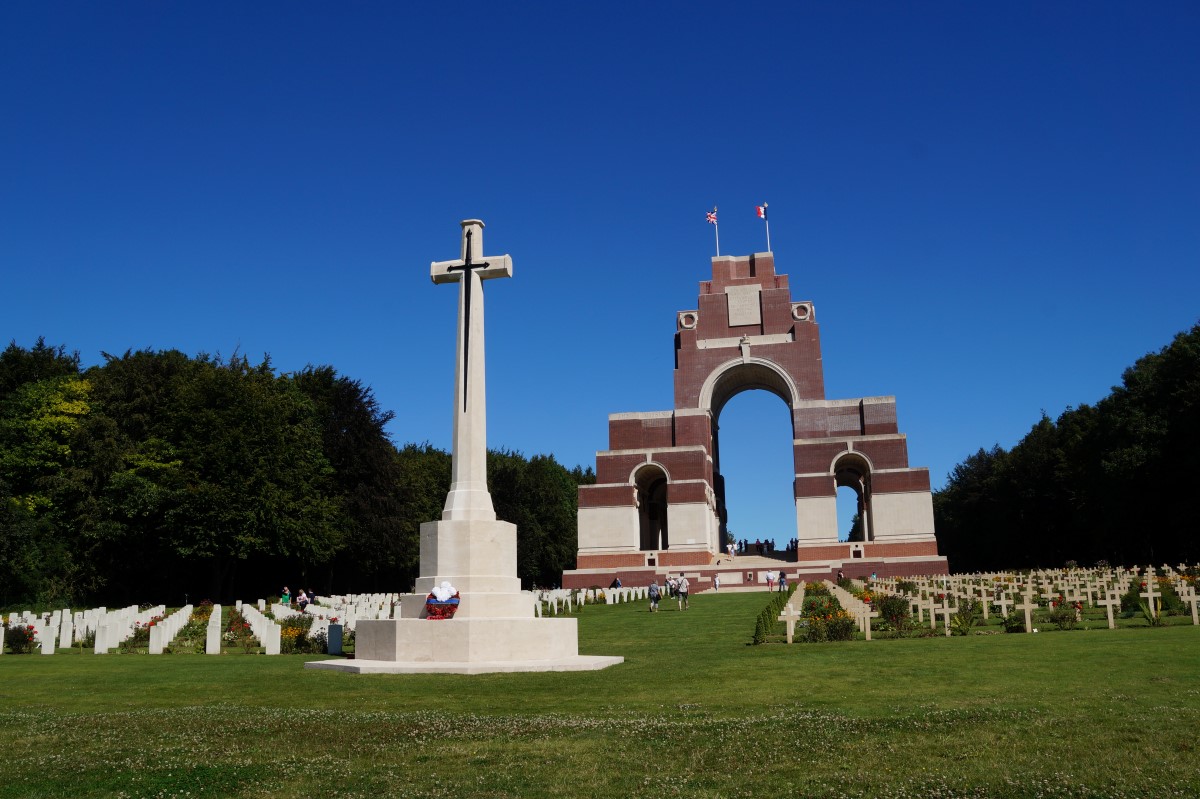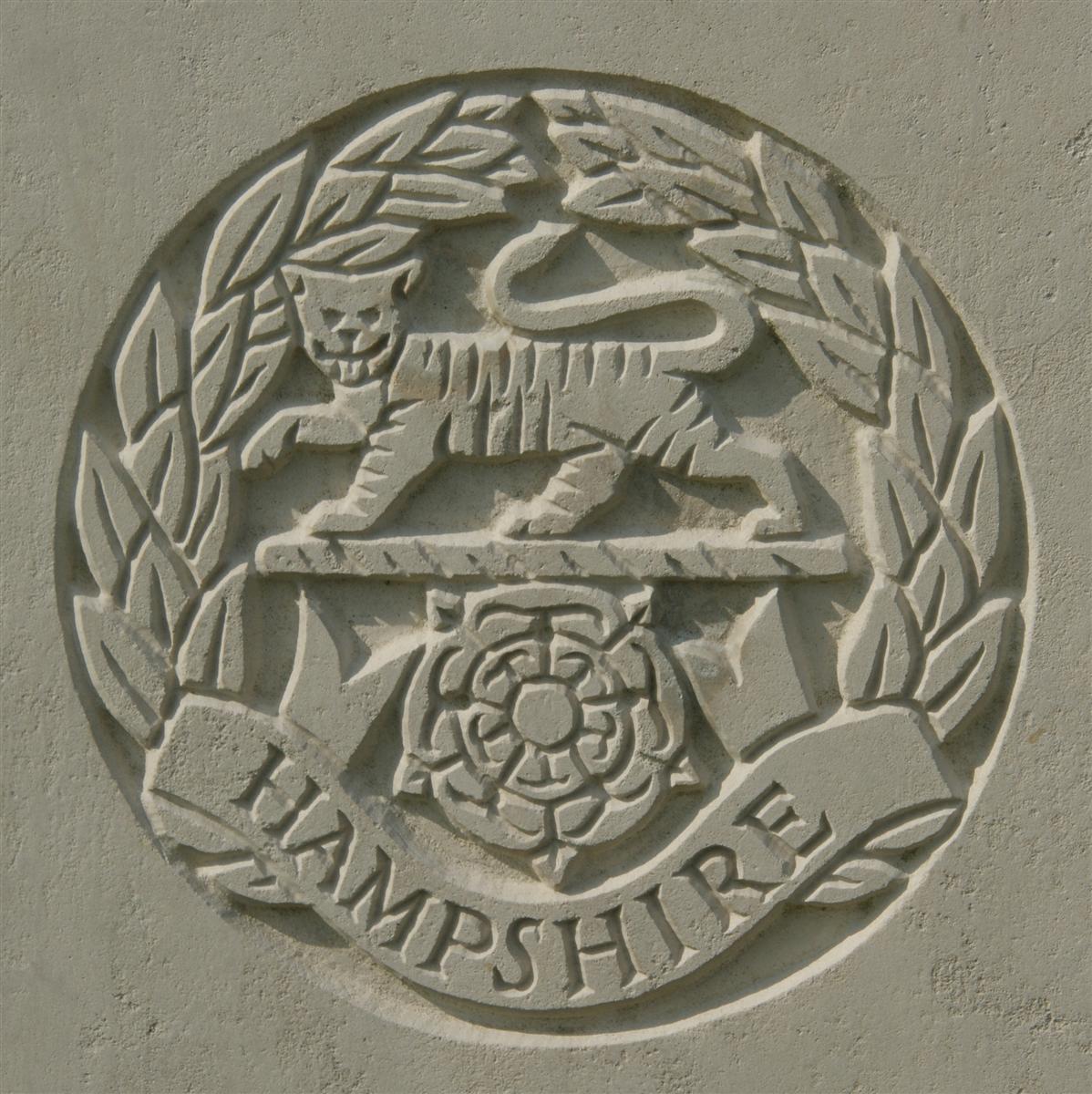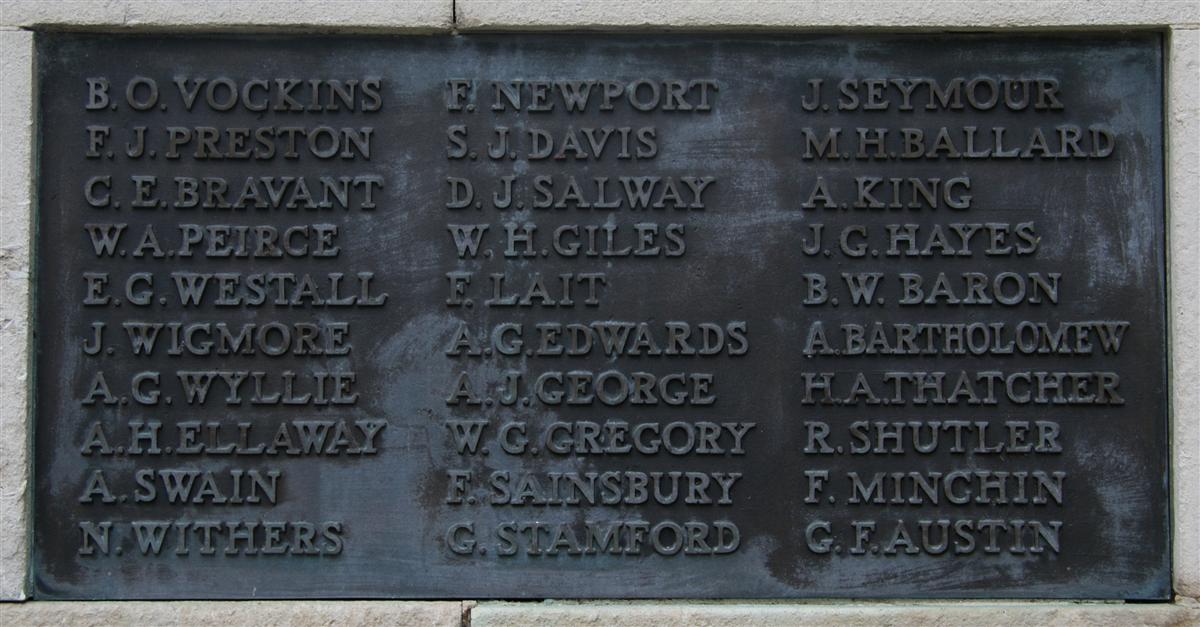William Alfred Peirce
Private 20741 William Alfred Peirce, 15th Battalion, Hampshire Regiment.

The enormous Thiepval Memorial to the missing of the Somme. As William has no known grave his name is among the 72,000 recorded here. |
William was born in Brighton in 1890, the son of Charles Peirce and his wife Elizabeth née Russell. He was the eldest of their four children, the others being Florence May (born 1892), Annie Elizabeth (1895) and Percy Edward (1898). The family moved around, being in Brighton between 1889 and 1895, Chichester in 1898, and Tunbridge Wells in 1901. At some point they moved to Newbury, seemingly to Salcombe Road. In 1917 Percy died in Newbury, aged only 19, and was buried in Newtown Road Cemetery, and in 1920 Annie married Stanley Ferris in the town. When the war memorial was erected in 1922 a family member put forward William’s name for inclusion, but the Commonwealth War Graves Commission (CWGC) has an Alton address (24 Normandy Street) for his parents. Most of the CWGC records date to the early/mid 1920s, when they contacted families about the inclusion of short messages on gravestones. The family’s stay in Newbury was probably only for five or six years.
There is no evidence that William ever lived in the town. He married Lily Louise Grant in the Petersfield registration district in 1915, very possibly before his parents moved to Newbury - he was almost certainly living independently after then. Lily was living in Aldershot when she was in contact with the CWGC in the 1920.
William signed up for war service with the Hampshire Regiment and served in the 15th (Service) Battalion (2nd Portsmouth). This battalion was originally raised by the Mayor of Portsmouth beginning on 5 April 1915 and was adopted by the War Office on 30 May - it is an example of the so-called ‘pals battalions’. As William enlisted in Portsmouth he may well have been one of the early recruits to respond to the Mayor’s call and join the battalion, although his regimental number suggests he enlisted later, in October/November 1915.

The badge of the Hampshire Regiment as used on Commonwealth War Graves. |
On 15 September 1916 the British launched an assault on the German positions around Flers, Lesboeufs and Courcelette. This was the third general attack of the battle following the opening day and the mid-July assault on the Bazentin Ridge. In the mean time numerous small assaults had nibbled away at the German positions in an attempt to improve the British position in preparation for this next main phase of the battle. Known as the Battle of Flers-Courcelette, it was successful in making significant advances; however, it degenerated into an attritional struggle that dragged on until the weather finally ended the fighting on the Somme in November. The battle is famous for the first appearance of tanks on the battlefield; dogged by mechanical problems they did not provide any decisive advantage, but they did enough to encourage General (soon to be Field Marshall) Haig to order hundreds more.
There were two very notable casualties on the first day of the battle: the prime minister’s son, Raymond Asquith died, and future prime minister, Harold Macmillan was seriously injured. A far less notable casualty was William Peirce.
The 15th Hampshires were a part of the 41st Division’s assault on the village of Flers and were a part of a famous episode. The battalion was supported by eight tanks, one of which did not breakdown before reaching the village, where a spotter plane reported “Tank seen in main street Flers going on with large numbers of troops following it”. For a short while it seemed that the tanks really had made the vital difference - it was headline news in the British press.
The battalion suffered heavy casualties – Officers: 8 killed, 5 wounded; Other ranks: 31 killed, 60 missing and 188 wounded.
An idea of the day can be gleaned from the battalion war diary:
War Diary, 15th Battalion Hampshire Regiment - 15 September 1916
Action commenced with the Batt moving across No Mans’ Land, just behind the barrage. The barrage in front of the Batt was excellent - just what the men had been trained to expect & came up to expectation so far as keeping the enemy quiet. Things were not so satisfactory on our left however, for a full 10 mins was taken up before three machine guns were silenced. These guns took heavy toll of the left platoons, of Coy Commanders – no less than three being fatally hit before the first objective was won - Capt H E Carrington, Capt S Thompson and Capt H Stapelton. One of these guns was put out by two men, who walked along the trench and shot the team.
The second objective was taken with less trouble, many of the enemy running towards FLERS without equipment or arms.
The Armoured ‘Cars’ did not up to this point do much except perhaps cause alarm in the second enemy line, owing to them having dropped behind.
The Batt, with the 124th Bde on our right, and the 18th KRRC on our left swept on the FLERS, which was entered more or less cleared, and passed.
It was during this period that one of two Armoured ‘Cars’ did most useful work smashing up the enemy’s strong points, and without doubt demoralizing them. It also gave the men great confidence.
Meanwhile losses had been fairly heavy owning to the heavy barrage put up by the Germans.
By the time troops had passed through FLERS organised attack had ceased, owing to formations have been broken up. And to the heavy casualties amongst the officers. This appears to have resulted in men either strolling back through FLERS, getting into dug outs, or digging in around and beyond the village. They were isolated and disorganised, and little or no information came back to Batt HQ. . . .
It is impossible to tell where or when William fell, though it appears likely that it was in an area that was shelled because he was reported among the missing. As the British ended the action in control of the battle area the identification of the fallen would have been relatively straightforward - unless there was little to identify, as was often the case when a body was destroyed or buried by a shell burst.

William's name on Newbury War Memorial (upper left) |
In Newbury he is remembered on Tablet 4 of Newbury Town War Memorial.
His family also included his name on the gravestone on his brother Percy’s grave in Newtown Road Cemetery.

Find a memorial :
| Died this day: | |
| 15 January 1943 | |
| L C Lawrence | |
| Newbury |

Like this site? Show your appreciation through a donation to a great charity.